| DC4143 |
Besifloxacin HCl
Featured
|
Besifloxacin HCl is a fourth-generation fluoroquinolone antibiotic. |

|
| DC21382 |
EIDD-1931(NHC)
Featured
|
EIDD-1931 (β-d-N4-Hydroxycytidine, NHC) inhibits both murine hepatitis virus (MHV) (EC50 of 0.17 μM) and Middle East respiratory syndrome CoV (MERS-CoV) (EC50 of 0.56 μM) with minimal cytotoxicity. It also inhibits SARS-CoV-2 and multiple 2 endemic, epide |

|
| DC10890 |
Bictegravir
Featured
|
Bictegravir is a novel, potent inhibitor of HIV-1 integrase with an IC50 of 7.5 nM. |

|
| DC9700 |
BMS-707035
Featured
|
BMS-707035 is a potent, specific, and reversible HIV-I integrase (IN) inhibitor that blocks HIV IN strand transfer activity. |

|
| DC5077 |
Boceprevir(EBP 520; SCH 503034 )
Featured
|
Boceprevir(EBP 520; SCH 503034 ) is useful for Anti HCV. |
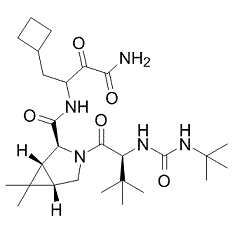
|
| DC1002 |
Carfilzomib (PR-171)
Featured
|
Carfilzomib is an irreversible proteasome inhibitor with an IC50 of 5 nM in ANBL-6 and RPMI 8226 cells,showed potent activity against COVID-19(SARS-COV-2). |

|
| DCAPI1497 |
Cancidas
Featured
|
Caspofungin is a semi-synthetic analogue of pneumocandin B0 with improved water solubility, a significant limitation in the development of the echinocandin class as pharmaceuticals. Caspofungin acts by inhibition of the synthesis of β (1,3)-D-glucan, an e |

|
| DCAPI1024 |
Cefditoren pivoxil |
Cefditoren pivoxil |
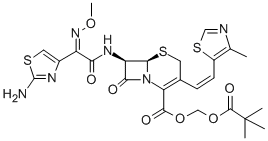
|
| DCAPI1021 |
Cidofovir(Vistide)
Featured
|
Cidofovir(Vistide) |
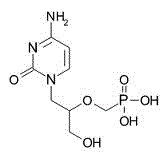
|
| DC8937 |
Clarithromycin |
Clarithromycin is a macrolide antibiotic and a CYP3A4 inhibitor. |
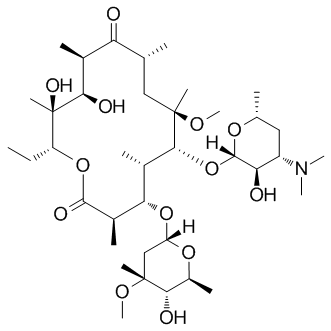
|
| DC7387 |
Clemizole Hydrochloride
Featured
|
Clemizole is a H1 histamine receptor antagonist.Recently, researchers have identified that clemizole hydrochloride can inhibit NS4B's RNA binding and hepatitis C virus (HCV) replication. |

|
| DC8832 |
Clemizole (free base)
Featured
|
Clemizole is a H1 histamine receptor antagonist.Recently, researchers have identified that clemizole hydrochloride can inhibit NS4B's RNA binding and hepatitis C virus (HCV) replication. |

|
| DCAPI1085 |
Clevudine (Levovir)
Featured
|
Clevudine (Levovir) is an antiviral drug for the treatment of hepatitis B,showed potent activity against COVID-19(SARS-COV-2) . |
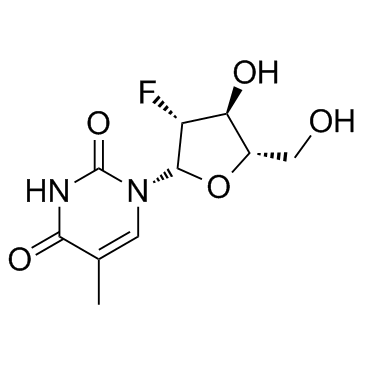
|
| DC7761 |
Brincidofovir (CMX-001)
Featured
|
CMX001 (Brincidofovir; HDP-CDV) was developed as an orally active, lipophilic form of cidofovir (CDV); has enhanced activity in vitro and in vivo compared to CDV against certain herpesviruses, adenoviruses and orthopoxviruses.IC50 Value: 5.5 nM (EC50, in PDA at 7 dpi) [3]Target: anti-CMVCMX001 is currently in Phase II clinical studies for development as a therapeutic agent for human CMV, adenovirus and BK virus infections, as well as, for adverse events following smallpox vaccinations.in vitro: In PDA at 7 dpi, the CMX001 50% effective concentration (EC50) was 5.55 nM, the 50% cytotoxic concentration (CC50) was 184.6 nM, and the 50% selectivity index (SI50) was 33.3. The EC90 was 19.7 nM, the CC90 was 5,054 nM, and the SI90 was 256.1. In COS-7 cells, JCV replication was faster and the EC50 and EC90 were 18- and 37-fold higher than those in PDA, i.e., 0.1 μM and 0.74 μM (CC50, 0.67 μM; SI50, 6.7; CC90, 12.2 μM; SI90, 16.5) at 5 dpi [3].in vivo: CMX001 and CDV are equally efficacious at protecting mice from mortality following high ectromelia virus doses (10,000 x LD(50)) introduced by the intra-nasal route or small particle aerosol. Using CMX001 at a 10mg/kg dose followed by 2.5mg/kg doses every other-day for 14 days provided solid protection against mortality and weight loss following an intra-nasal challenge of (100-200) x LD(50) of ectromelia virus [1]. When CMX001 was administered orally to mice infected with HSV-1, mortality was reduced significantly (p≤0.001) with all three dose levels when treatments were initiated 24 h post viral inoculation. When treatments were started 48 h post viral inoculation, 5 and 2.5 mg/kg significantly reduced mortality (p≤ 0.001). If treatments were delayed until 72 h post viral inoculation, CMX001 did not reduce mortality or increase the mean day to death. When mice were infected intranasally with HSV-1 and treatments initiated 24 h post viral inoculation using CMX001 at 5 mg/kg or ACV at 100 mg/kg, virus replication in target organs was reduced by both CMX001 and ACV when compared to vehicle treated mice [2]. Toxicity: Diarrhea was the most common adverse event in patients receiving CMX001 at doses of 200 mg weekly or higher and was dose-limiting at 200 mg twice weekly. Myelosuppression and nephrotoxicity were not observed [4]. |
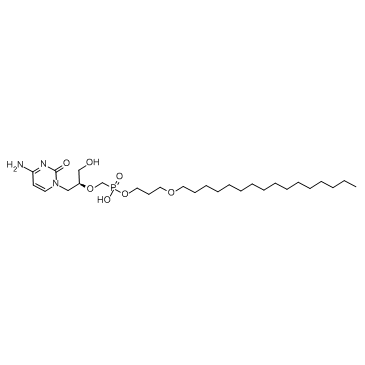
|
| DC2046 |
Cobicistat (GS-9350)
Featured
|
Cobicistat (GS-9350) is a potent and selective inhibitor of CYP3A with IC50 of 30-285 nM. |

|
| DC11081 |
Coblopasvir |
Coblopasvir (KW136, KW-136) is a novel HCV NS5A inhibitor under development for treatment of HCV infection.. |

|
| DC9510 |
CTS-1027 |
CTS-1027 is a potent small molecule inhibitor of MMPs(IC50=0.4 nM/0.6 nM for MMP2/MMP13); >1,000 fold selectivity over MMP1.
|

|
| DC7394 |
Daclatasvir dihydrochloride (BMS-790052)
Featured
|
Daclatasvir (BMS-790052) is a highly selective inhibitor of HCV NS5A with EC50 of 9-50 pM, for a broad range of HCV replicon genotypes and the JFH-1 genotype 2a infectious virus in cell culture. |

|
| DC8238 |
Danoprevir
Featured
|
Danoprevir is a peptidomimetic inhibitor of the NS3/4A protease of hepatitis C virus (HCV) with IC50 of 0.2-3.5 nM, inhibition effect for HCV genotypes 1A/1B/4/5/6 is ~10-fold higher than 2B/3A. |

|
| DC8908 |
Darunavir ethanolate
Featured
|
Darunavir ethanolate is an HIV protease inhibitor,showed potent activity against COVID-19(SARS-COV-2). |
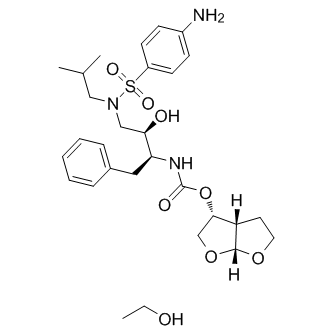
|
| DC11352 |
Delavirdine (mesylate) |
Delavirdine is a non-nucleoside reverse transcriptase inhibitor (NNRTI) that selectively inhibits HIV-1 reverse transcriptase over DNA polymerase α and δ in vitro (IC50s = 0.26, 440, and >550 μM, respectively). |

|
| DC8897 |
Delavirdine |
Delavirdine(U 90152) is a potent non-nucleoside reverse transcriptase inhibitor (NNRTI). |
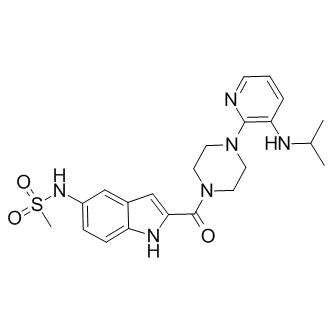
|
| DC10612 |
Delpazolid (LCB01-0371)
Featured
|
Delpazolid (LCB01-0371) is a new oxazolidinone with cyclic amidrazone. |

|
| DC7273 |
Dolutegravir
Featured
|
Dolutegravir (DTG, GSK1349572) is an integrase inhibitor(IC50= 2.7 nM), modest activity against raltegravir-resistant signature mutants Y143R, Q148K, N155H, and G140S/Q148H. |

|
| DC10250 |
Dolutegravir Sodium
Featured
|
Dolutegravir is a HIV integrase inhibitor with IC50 of 2.7 nM. |

|
| DC9308 |
Doravirine (MK-1439)
Featured
|
Doravirine (MK-1439) is a non-nucleoside reverse transcriptase inhibitor. |
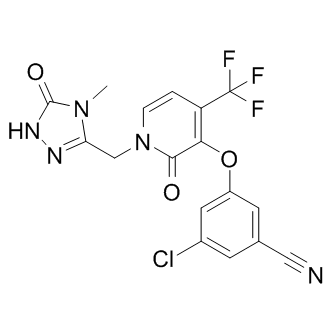
|
| DC11409 |
DSM265
Featured
|
DSM265 is a PfDHODH inhibitor with an IC50 of 8.9 nM. DSM265 can also inhibit the growth of P. falciparum 3D7 parasites with an EC50 of 4.3 nM. |

|
| DC8485 |
E-64d(Aloxistatin)
Featured
|
E-64D is an inhibitor of cathepsins B and L; also thought to inhibit calpain,showed a potent activity for COVID-19(SARS-COV-2)with EC50: MERS-COV(1.275),SARS-COV(0.760) |

|
| DCAPI1479 |
Efavirenz |
Efavirenz is a nonnucleoside HIV-1 reverse transcriptase (RT) inhibitor which selectively inhibits the glucuronidation of 3'-Azido-3'-deoxythymidine β-D-glucuronide, Sodium Salt. Studies suggest that Efavirenz binds to a distinct site of reverse transcrip |
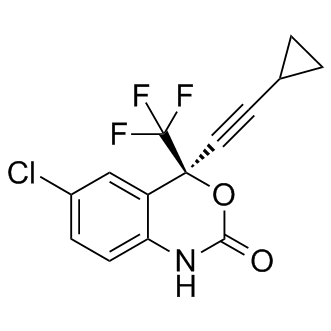
|
| DC10301 |
Emodepside
Featured
|
Emodepside (PF 1022-221) is a cyclooctadepsipeptide with broad-spectrum anthelmintic activity. |

|





























